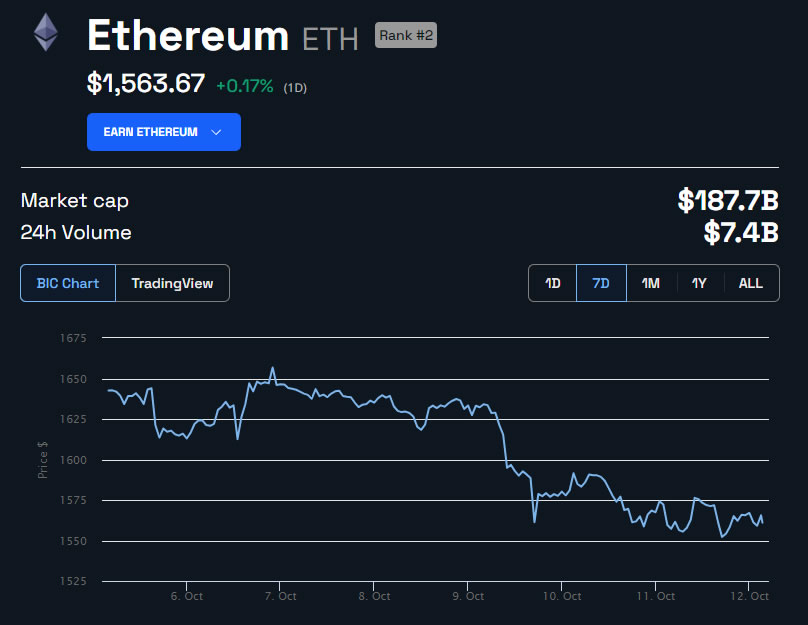2023-3-23 22:30 |
A recent Bank of America Report argues that Ethereum’s long-term viability depends on scalability, even as OFAC censorship issues loom large post-Merge.
According to the report, Ethereum’s first-mover advantage drew decentralized app developers who now face the prospect of network congestion until sharding goes live.
Ethereum’s Low Transaction Throughput and Censorship Threaten UseData from Blockchair suggests that the Ethereum network processed under 15 transactions per second on March 12, 2023.
Ethereum Transaction Throughput | Source: BlockchairAnother issue threatening Ethereum’s future is validators choosing only to process transactions for Ethereum addresses that the U.S. Office for Foreign Assets Control approves.
After the Ethereum Merge, validators bundle transactions into blocks and broadcast them. Proposer-builder separation allows builders to construct transaction blocks and offer them to a block proposer. The proposer chooses the most profitable transaction block.
Separating the builder and proposer roles means that transactions are less likely to be censored.
MEV-Boost is software validators use to boost returns by subcontracting block production to the highest bidder. Validators can configure their software to accept blocks from certain MEV-boost relays, including those from Flashbots. Boost relays that omit transactions from sanctioned blocks threaten the neutrality of the Ethereum network.
All-Time Percentage of OFAC-Compliant Transaction Blocks | Source: MEV WatchSince Ethereum migrated to a proof-of-stake chain, 56% of transaction blocks have been subject to OFAC censorship. Further contributing to Ethereum’s reduced neutrality is the network has many institutional validators like the Celsius Network.
How ETH Network Will Survive Congestion and SanctionsEthereum co-founder Vitalik Buterin’s scaling roadmap pegged rollups as an intermediate step to improved transaction throughput on Ethereum.
Developers frustrated with the low transaction throughput on Ethereum could stay within the ecosystem by developing applications for rollups.
The smart contract language for Arbitrum, the rollup with the highest value locked, is compatible with the Ethereum Virtual Machine, making developer migration easier.
ConsenSys, the company behind the self-custodial wallet MetaMask, recently announced the launch of an early version of a zero-knowledge rollup that allows Ethereum developers to onboard within 5 minutes.
The Ethereum roadmap has dispensed with shard chains. Instead, developers plan to use a new method called danksharding that will be preceded by an intermediate step called Proto-Danksharding.
Proto-danksharding will make transactions cheaper by using temporary data blobs instead of placing transaction information in the call data section of a transaction.
Ethereum.org predicts that full danksharding may be several years away. Therefore, the growth of layer-two solutions like Arbitrum is critical in maintaining Ethereum’s developer community.
There may be hope on the horizon on the censorship front, as the site MEV Watch reports that only one-third of all transaction blocks over the past weekend complied with OFAC rules. Over the last day, the numbers were similar.
OFAC-Compliant Blocks in the Last Day | Source: MEV WatchA further reduction in censorship is likely with the emergence of non-censoring variants of MEV-Boost software like Ultra Sound, which have processed about 20% of blocks in the last two weeks.
MEV-Boost Software Market Share | Source: mevboost.picsLast year, the non-profit crypto think-tank Coin Center sued OFAC for sanctioning Ethereum mixer TornadoCash.
For Be[In]Crypto’s latest Bitcoin (BTC) analysis, click here.
The post The Future of Ethereum Is Compromised: Scalability and Censorship Resistance Issues Loom Large appeared first on BeInCrypto.
origin »Ethereum (ETH) на Currencies.ru
|
|

